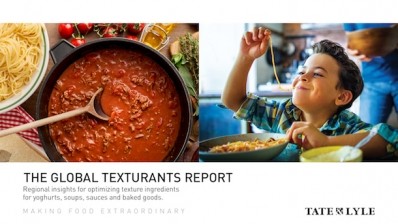Promotional Features
Cool for kids: The inside scoop on healthier ice cream
People have been enjoying ice cream for hundreds of years, and it’s a particular favourite in the UK, Germany and Nordic countries.
It’s a cool treat that kids love. We know this to be true, with over 50% of children in the UK and Germany eating ice cream daily or at least twice a week; and with 40% of take-home ice cream purchases being made by families with children.1,2
But we also know as children eat more ice cream there is a risk it can lead to health problems due to its high calorie, sugar and fat contents.
While there is no fun in stopping children from eating ice cream altogether, children are the future, and we have a shared responsibility to help them grow up as healthy and happy young people.
So rather than eliminating, we reinvent.
The opportunity for manufacturers
Offering tasty, healthier ice cream for kids creates a value proposition that supports category growth for manufacturers and brands, while also answering public health concerns.
Obesity is on the rise in Europe, with one in three children overweight or obese, according to the World Health Organization (WHO).3 Children are also the most at risk from tooth decay, of which any sugar added to a food or drink can be a cause.4
When we look at the average ice cream in Europe, 100g contains an average of 18g of sugar. Depending on the portion size, one serving may exceed almost the entire recommended daily intake of 19g for a four-to-six-year-old child.
While parents don’t want to keep the treat from their kids, they are showing interest in lower sugar ice cream developed for children. Research by Tate & Lyle showed that parents are ranking health and transparency as the most important considerations when buying ice cream for their children.
Tate & Lyle also found that for parents in the UK and Germany, 40% ranked nutrition and ingredient lists as their top priorities when choosing children’s ice cream.5
In addition to healthier options impacting parents’ buying decisions, Tate & Lyle has seen regulators roll out strategies to reduce the consumption of sugary foods to improve public health. This includes a voluntary scheme – the EU Pledge – where firms have agreed not to advertise ice cream to children under 13 years old.
A recipe for change
Supporting healthy living is at the heart of Tate & Lyle, and this purpose has the biggest impact on the world. Tate & Lyle wants to help make healthy food tastier, and tasty food healthier, driven by the development of new ingredients and solutions.
Improving the nutritional profile of ice cream successfully is a complex challenge. Ice cream should be a tasty treat, so people can easily be put off by overly virtuous products that feel like they are not just low in calories, sugar and fat, but also low in overall enjoyment.
There have been different types of ice cream innovations from manufacturers to incorporate healthier options. Some have simply shrunk their portion sizes, while others have incorporated fruits to create a healthier perception of their ice cream. But smaller servings don’t translate to better non-HFSS and NutriScore ratings, and fruits in desserts are often processed and are considered free sugars (sugars naturally present in honey, syrups, fruit juices and fruit juice concentrates), according to WHO.6
The approach to healthier ice cream should be rooted in science, and rigorously tested by trained experts. Understanding the science of ice cream has helped Tate & Lyle unlock solutions for the functionality of foods with reduced sugar and fat.
Down to science
There are a few technical challenges to consider when striving to reduce sugar and fat in a treat like ice cream. When reducing sugar, we’re met with less sweetness, a harder texture and a colder mouthfeel. And less fat makes the ice cream more prone to a brittle texture, reduced stability during temperature fluctuations, changes in flavour profile, and shrinking in size.
Tate & Lyle’s solution, PROMITOR® Soluble Fibre, is at the core of its recipes and delivers all the characteristics of an indulgent ice cream, along with the nutritional benefits that parents prioritise.
This fibre makes it possible for manufacturers to create ice cream that has up to half the sugar and fat versus the market benchmark, without compromising the sensory eating experience. It is also a clean label ingredient and can be labelled as a ‘soluble corn fibre’ on ingredients lists.
Understanding the challenges, the science behind innovating recipes for healthier solutions, and the solutions available, will help brands improve the nutritional profile of their ice cream while building value and enhancing their reputation among both parents and regulators.
Many parents are not overly familiar with the nutritional guidelines for children, and trust brands to make children’s options healthier, so the ice cream industry has a critical role to play in developing healthier innovations that parents can trust.
Discover more about Tate & Lyle’s ice cream opportunity here.
References
1. Tate & Lyle ice cream proprietary research. December 2023.
2. Global Data. Take home ice cream in UK, Germany, Sweden.
3. World Health Organization. 1 in 3 children in the WHO European Region is living with overweight or obesity.
4. NHS. Sugar: the facts.
5. Tate & Lyle ice cream consumer proprietary research, December 2023 – UK & Germany.
6. World Health Organization. Sugars Factsheet.





